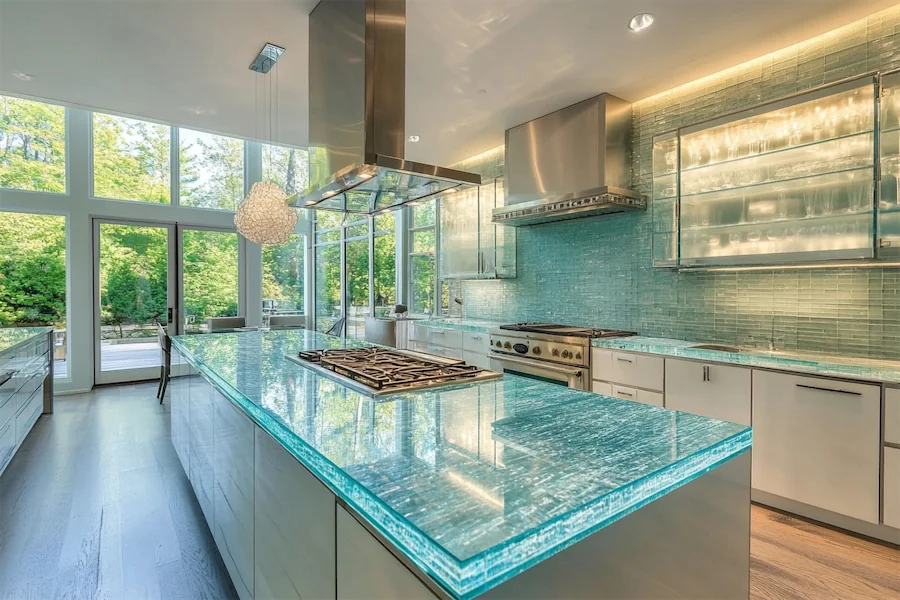A glass kitchen introduces a sleek and modern aesthetic, utilizing glass elements to enhance light, openness, and elegance in the culinary space.
Key Features of Glass Kitchens
- Transparency and Light: Glass surfaces reflect and transmit light, creating a brighter and more spacious atmosphere. This quality is particularly beneficial in smaller kitchens, making them appear larger and more open.
- Versatility: Available in various finishes—clear, frosted, textured, or colored—glass can complement diverse design styles, from contemporary to traditional. This adaptability allows for creative integration into different kitchen themes.
- Hygiene and Maintenance: Glass surfaces are non-porous, making them resistant to stains and easy to clean, which is advantageous for maintaining a sanitary kitchen environment. Regular wiping with appropriate cleaners keeps them looking pristine.
Applications of Glass in Kitchens
- Cabinet Doors: Incorporating glass-fronted cabinets adds visual depth and allows for the display of attractive dishware, enhancing the kitchen’s aesthetic appeal. Options include clear glass for full visibility or frosted glass for a subtler look.
- Backsplashes: Glass backsplashes offer a sleek, reflective surface that can be customized with colors or patterns, serving as a focal point and protecting walls from spills. They are also easy to clean, combining functionality with style.
- Countertops: Glass countertops provide a contemporary look and can be crafted in various textures and hues, adding uniqueness to the kitchen design. They are durable and can withstand typical kitchen activities when properly maintained.
Considerations When Designing a Glass Kitchen
- Safety: Utilizing tempered or laminated glass is essential to ensure durability and reduce the risk of breakage, enhancing safety in the kitchen environment. These types of glass are designed to withstand impact and temperature variations.
- Maintenance: While glass is easy to clean, it can show fingerprints and smudges; selecting finishes that minimize these issues, such as frosted or textured glass, can be beneficial. Regular maintenance is necessary to keep glass surfaces looking their best.
- Integration with Other Materials: Combining glass with materials like wood or metal can create a balanced and inviting kitchen design, softening the sleekness of glass and adding warmth or industrial elements as desired.
Conclusion
Incorporating glass elements into your kitchen design can enhance brightness, openness, and modernity. By thoughtfully selecting glass types and integrating them with other materials, you can create a functional and aesthetically pleasing kitchen that reflects your personal style.
